Mazda RX-7: A Guide To Every Generation
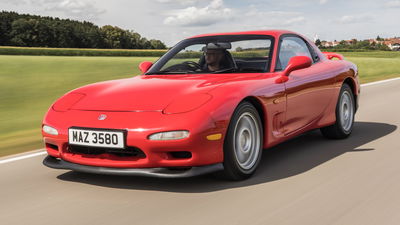
For most manufacturers that toyed with the idea, the rotary engine – sometimes called the Wankel engine after its inventor, Felix Wankel – pretty quickly proved to be a dead end for automotive use. Nobody told Mazda, though.
Having first used the design in 1967, the company once put these unusual engines in all manner of vehicles. However, undoubtedly the most famous and long-lived of all of them was the Mazda RX-7. Its three generations were produced at a time when the Japanese car industry was at its experimental best, producing wild performance machines that caught the established European and American manufacturers off guard with their new approaches to going fast.
The RX-7s were no exception, still beloved today for their timeless good looks, delicate handling, tunability and the inimitable free-revving characteristics of the rotary engine. Join us for a journey through all three generations of this very special car.
What the heck is a rotary engine anyway?
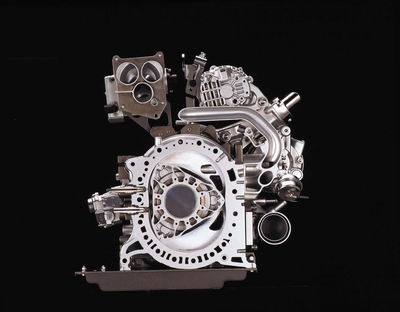
While we don’t really have time for an in-depth explanation of how a rotary engine works, it’s worth a quick lesson. In a normal internal combustion engine, the compression and ignition strokes are provided by a piston moving up and down in a cylinder.
In a rotary, though, they’re achieved by a rotor, shaped like a triangle with sides that curve outwards, spinning around inside a chamber. Various manufacturers experimented with this design in the ’60s but found that rotaries tended to consume a huge amount of fuel and oil and were not particularly thermally efficient.
On the other hand, they’re compact, lightweight and like to rev high, fast and smooth, all of which, in Mazda’s eyes, made them ideal for use in a compact sports car. They also make big power from tiny displacements, which, in the days when plenty of countries dished out road tax based on engine size, made them financially attractive compared to conventionally powered cars.
Origins
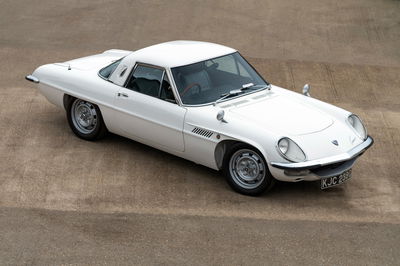
The RX-7 wasn’t the first sports car Mazda built with a Wankel engine. In fact, its very first rotary-powered car, the Cosmo, was a hugely pretty little coupe. There were a couple of small coupes that predated the RX-7, too, which wore the RX nomenclature for export markets – the RX-2, RX-3 and RX-4.
Nobody seems quite able to agree on what the ‘RX’ abbreviation stands for. It’s widely agreed that the ‘R’ stands for rotary, but various different sources suggest the ‘X’ denotes ‘eXperimental’, ‘eXport’ or simply an internal code for a sports car. Whatever it meant, though, the name would pop up again in 1978 on the first RX-7.
SA/FB RX-7
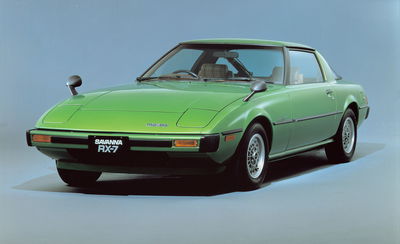
In many ways, it was miraculous that the original RX-7 happened at all. The oil crisis of the early ’70s had killed the thirsty rotary in plenty of Mazda’s products, leaving it only in the Luce luxury saloon and the Cosmo, which had grown into a bigger, more luxury-oriented coupe for its second generation.
Happen it did, though, appearing in 1978 sporting many of the hallmarks the car would stick with for the rest of its life: a compact, two-door body, seating for four (just), pop-up headlights and, naturally, a rotary.
This was a lightly updated version of the company’s existing 12A twin-rotor engine, displacing a minute 1148cc. In its original RX-7 application, power figures were meagre no matter which market it was sold in – 128bhp in Japan, but cut down to 104bhp in Europe and just 99bhp in North America thanks to tighter emissions rules. It wasn’t the most sophisticated thing either, with a live rear axle, recirculating ball steering and rear drum brakes.
Despite that, though, the RX-7 was light, well-balanced and loved to rev, and it was an immediate hit.
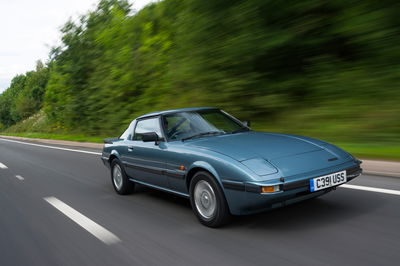
These early cars wore the SA22C model code, although a 1981 facelift brought the FB prefix, a formula future RX-7s would follow. This update also brought a light visual nip and tuck, introducing integrated plastic bumpers to keep it in check with US safety regulations, and performance increases for some markets – power went up to 113bhp in Europe, and 138bhp for some Japanese versions. New trims, which varied from market to market, also introduced kit like disc brakes on both axles and a limited-slip diff.
The most significant change yet, however, came in 1983. Mazda had been working on a turbocharged version of the 12A engine, and that year, it found its way into the RX-7 in Japan. It saw power lifted to 163bhp, making it the highest-performance version of any first-gen RX-7.

A second facelift arrived in 1984. This brought further minor visual tweaks, but more importantly, saw the introduction of a new engine in the North American-market GSL-SE model. Still a twin-rotor, its displacement was upped to 1.3 litres, increasing power to 135bhp. As such, it received a new designation: 13B. This is not the last you’ll be hearing of this engine.
Though numbers are dwindling today thanks to chassis rot and rotary durability issues, the FB was easily the most-produced RX-7 of all: in its seven-year life, somewhere around half a million were built, depending on who you ask.
FC RX-7

In 1985, an all-new RX-7 was introduced – the FC. With styling that Mazda admits on its very own UK site was ‘Porsche-inspired’ (look at it next to a 944, and it’s hard to deny), the 13B engine was now standard across the range.
In European markets, power was now up to 148bhp, and much of the outdated chassis kit of the original car was gone. Four-wheel disc brakes and rack-and-pinion steering were now standard, and the old agricultural live rear axle was replaced with independent rear suspension, enhanced by Mazda’s Dynamic Tracking Suspension System that allowed a small degree of passive rear-wheel steering.
For 1987, the turbocharged RX-7 returned. Badged the Turbo II, a twin-scroll turbocharger fitted to the 13B saw power upped to 182bhp for the Japanese market.

In 1988, the FC became the only of the three RX-7 generations to get a factory convertible model. Featuring a retractable fabric hood, the convertible only came with the naturally aspirated engine in the US and only with the turbocharged engine elsewhere.
A 1989 update brought further power gains – naturally aspirated cars went up to 160bhp and turbocharged examples to 200bhp.
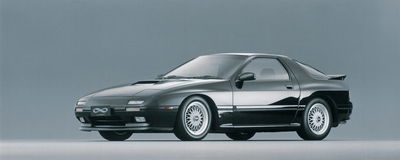
Among the notable special editions of the FC were the Japanese-market Infini series. Limited to 600 cars a year, slightly different versions were produced each year between 1987 and 1990. In addition to getting lots of extra kit as standard, these models were among the highest-performance RX-7s yet – the rear seats were ditched and the bonnet replaced with an aluminium one to save weight, and the suspension was firmed up. The final version made 212bhp courtesy of a new exhaust.
Produced between 1985 and 1992, the FC wasn’t anywhere near as great a commercial success as the original, but it’s thought that over a quarter of a million were still built.
FD RX-7

Production of the third-gen RX-7 began in late 1991, with the model taking on a totally new visual identity, with lots of curvaceous early ’90s-ness. This generation, codenamed the FD, was developed in the midst of Japan’s economic bubble. That bubble burst just as it arrived on the market, but it nevertheless packed plenty of features that showed it had been designed during financially heady times.
Most notable of these was the sole engine option, a further development of the 13B, now with twin turbos. Not only that, but they were sequential, following an example set by the Porsche 959. This meant that one turbocharger would kick in first lower down in the rev range, followed by the other higher up, a system designed to reduce the effects of turbo lag.
In Japanese and North American-spec cars, this engine initially produced 252bhp, while in Europe, it was held back to 236bhp. Nevertheless, even in Euro-spec, it would hit 62mph in a quoted 5.3 seconds and top out at 155mph – numbers that put it among the sports car elite in 1992.

In Japan, the FD was initially sold under Mazda’s short-lived ɛ̃fini luxury sub-brand (not to be confused with those slightly posher Infini FCs we were looking at earlier, although it's pronounced similarly). Among the Japanese trim levels was the A-Spec, which featured a host of parts from Mazda’s Mazdaspeed tuning wing and an uptick in power to 261bhp.
Another particularly special version arrived solely for the Australian market in 1995. Called the SP, it was a homologation special to allow Mazda to run a breathed-on RX-7 in Australia’s production car race series. It got tweaked suspension, several aluminium and carbon fibre panels, and an uprated intercooler, exhaust system and ECU to deliver 273bhp. Just 35 were built.
Slowing sales and stricter emissions and safety regulations saw the FD die off in many global markets before it had even had a chance. By the time a 1996 update came around with a modest power boost to 261bhp for manual-equipped cars, the RX-7 had disappeared from European and North American markets.
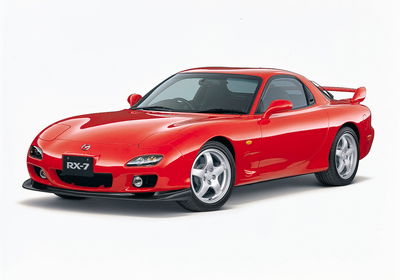
Then, when the final facelift arrived in 1998, the RX-7 was relegated to being a Japan-only model (it had also reverted back to being badged a Mazda, the ɛ̃fini brand having been killed off in 1997). In its home country’s wonderful car market, though, it had plenty of life left in it. With this final update, the range-topping Type RS version left the factory with a quoted 276bhp. This was the maximum allowed under the Japanese manufacturers’ ‘Gentleman’s Agreement’, and it’s entirely possible it was really making more.
Throughout its life, the Japanese-market FD RX-7 had a somewhat confusing range of high-performance Type R, Type RS and Type RZ versions, which tended to disappear and reappear year after year, and all brought varying equipment levels. The car regarded as the ultimate factory-built RX-7, though, arrived in 2002, right at the very end of the model’s life.
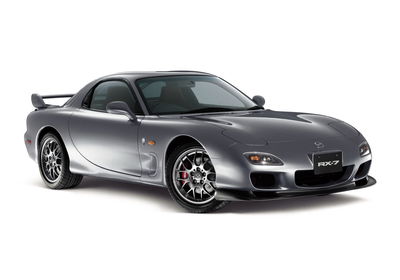
This was the Spirit R, a run-out special that essentially packaged up all the most desirable parts of the range into one sensational car: the top-spec 276bhp engine, Bilstein dampers, adjustable rear wing, drilled brake discs, forged BBS alloys and carbon-backed Recaro seats all featured. With only around 1500 built, the Spirit R is unsurprisingly the most sought-after RX-7 of all these days, and they can command properly silly prices when one comes up for sale.
With that, though, production of the third-gen RX-7 was done, and with it, the model as a whole. Despite having a production run of over a decade, the FD was the least produced generation of the three, with a little under 70,000 built. That contributed to a total production figure of 811,634 RX-7s between 1978 and 2002, per Mazda’s UK website.
The future
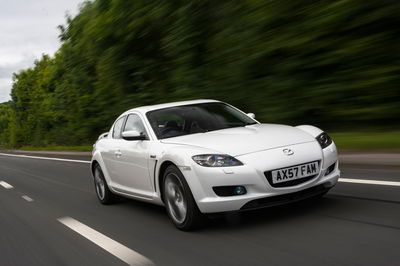
The RX-7 did get a direct successor of sorts. Arriving in 2003, the RX-8 was a front-engined, rear-wheel drive sports car powered by a rotary engine, just like its forebears. It took things in a slightly different direction, though. The engine was a heavily updated version of the 13B, rebadged the ‘Renesis’, but it had reverted to being naturally aspirated, and so it initially made only 189bhp. It also adopted an unusual body style, with a pair of small rear-hinged rear doors giving access to the back seats.
In production until 2012, the RX-8 is something of a cult classic in its own right and was the last rotary-powered car being made not only by Mazda but any manufacturer. Since then, there have been flashes of a hypothetical RX-9, first with the gorgeous RX-Vision concept in 2015.
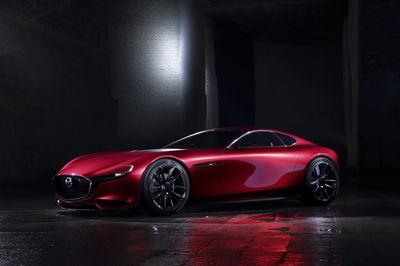
In 2023, the rotary engine did in fact make a return in a Mazda production car, but sadly not a snarly sports car. Instead, a small single-rotor engine serves as an optional range extender to top up the battery in the little MX-30 electric car.
However, all hope of a new rotary Mazda sports car is not lost. Also in 2023, Mazda debuted the Iconic SP, an electric sports car which, like the MX-30, uses a rotary engine to top up its battery – this time a twin-rotor.
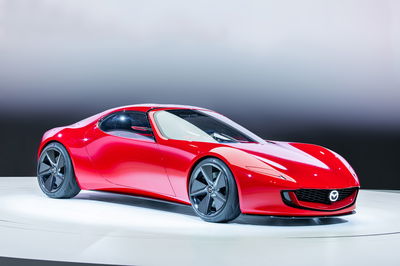
In 2024, Mazda put out a press release in which Mazda’s Design Division general manager, Masashi Nakayama, said: “This concept is not just one of those empty show cars. It’s been designed with real intent to turn it into a production model in the not-so-distant future.”
In other words, watch this space: it may not be in the traditional sense, but the rotary Mazda sports car could be very close to making a comeback.
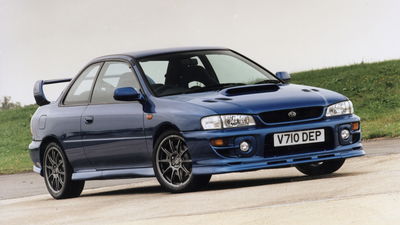













Comments
No comments found.